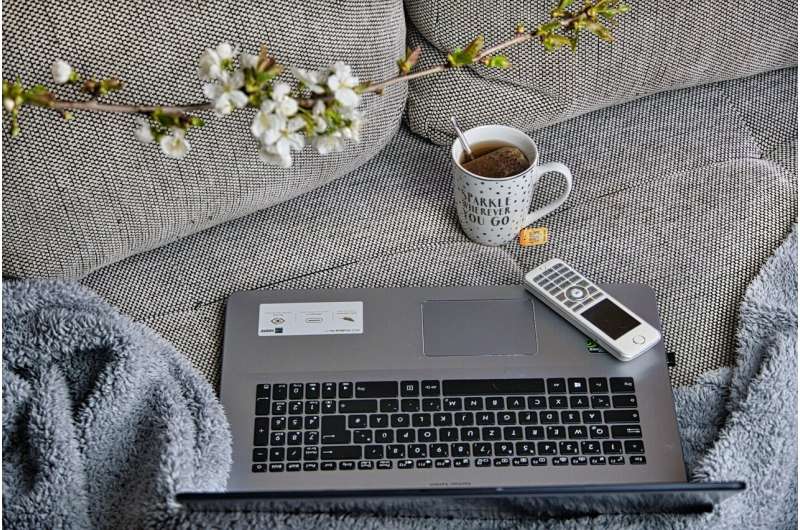Credit: Pixabay/CC0 Public Domain
While most workplaces acknowledge that they need to offer hybrid working, very few have a strategy to implement it to maximize productivity and worker wellbeing.
In its most recent report, the Centre of the New Workforce at Swinburne University of Technology has found that every single worker who had a work-from-home experience wants to convert to flexible working.
Director of the Centre of the New Workforce, Dr. Sean Gallagher says, "As we begin our return to office, organizations should not be rushing to resume normal programming (just with reduced days in the office). This is an opportunity to rethink our approach to hybrid working, and what makes sense for hybrid models today might not be as effective in six months' time."
While remote working is suited to individual productivity, this doesn't necessarily correlate to organizational productivity. The research found that flexible working is currently the least productive working model, compared to office-based or fully remote.
The Centre of the New Workforce's data suggests that, compared to home-based and office-based workers, flexible workers have the additional logistical challenge of where to work and when. Plus they are least likely to know what to do, and they also find it most difficult to be creative and collaborate.
However, flexible working is emerging as a deal breaker.
"We surveyed workers and what we found was that every single worker who had a work-from-home experience wants to convert to flexible working. Only a pay rise might convince them to stay, which could be very expensive for companies unwilling to shift to new ways of working."
Key findings
Researchers at the Centre of the New Workforce have been working on a blueprint for new models of hybrid working that meet employee expectations, make flexible working simpler and create value for companies navigating a world of increasing uncertainty.
For the ideal hybrid model, the research found that:
- Some remote working is likely to boost productivity
- Office time is ideal for building relationships, maintaining connections with colleagues and workplace learning
- Flexibility supports better work-life balance
Co-design is essential
It will be essential for companies to understand their knowledge workers' experience, expectations and aspirations around flexibility and hybrid work and the role of the office.
Diversity and inclusion implications should be front-of-mind, ensuring that hybrid working operates as fairly for female workers as for their male counterparts, across the generations, and for minority groups.
Program human-interaction activities in the new office
We've long known that in-person interactions in the workplace are the main way workers learn at work. The Centre for the New Workforce research found that Australian knowledge workers agree. And workplace learning leads to more positive attitudes towards a person's job.
The office is also key to dynamic collaboration and creativity, which could be significantly impacted if these types of activities are not prioritized.
Companies should establish rituals that develop the right in-person behaviors to ensure employees don't fall back into old office work habits. A 'set and forget' approach will fail.
Each organization will approach the new office differently, but could consider:
- Designating set spaces for certain collaborative activities
- Starting a certain day each week with a brainstorming session
- Ensuring major project kick-offs occur in the office
- Holding 'meet and greets' with new employees
Offices of the future will see fewer individual workspaces, more spaces for collaboration and socializing, a greater focus on multipurpose spaces with reconfigurable workplace settings and furniture, and tech-enabled spaces.
More information: Hybrid working 2.0: Humanising the office: www.swinburne.edu.au/research/ … id-working-australia
Provided by Swinburne University of Technology
























